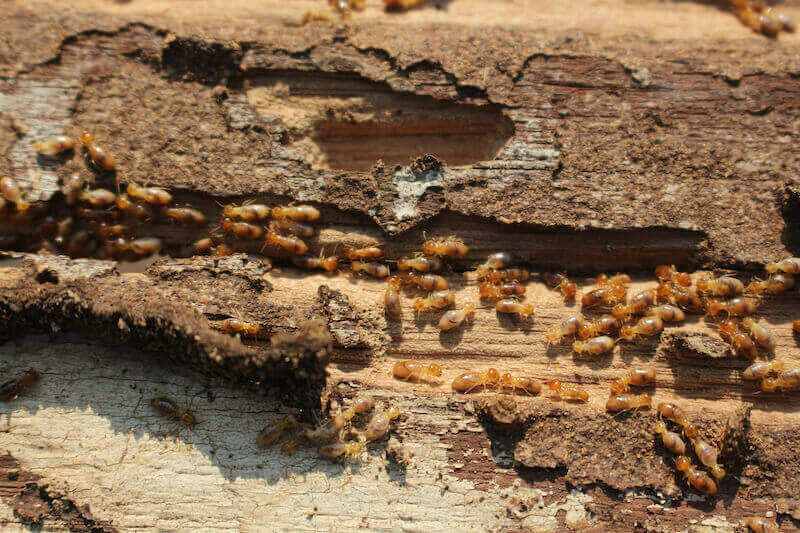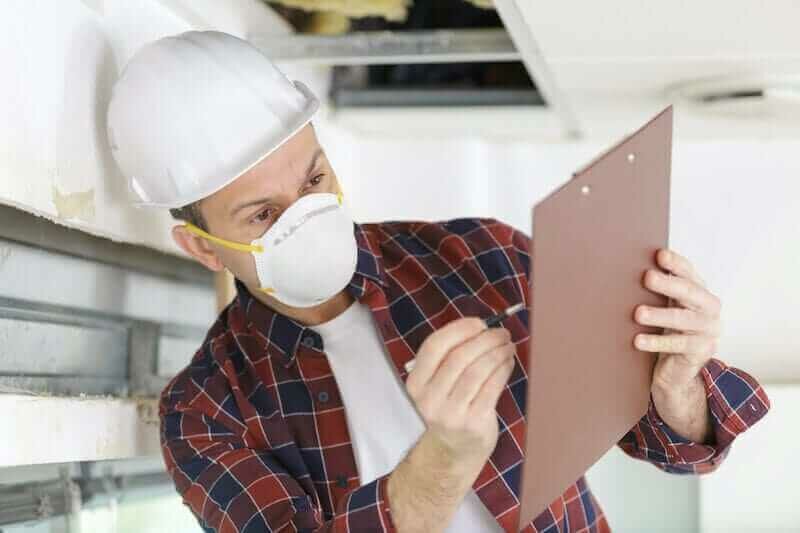Termite infestations must be addressed in your home immediately and may prevent you from selling your house fast. Fortunately, there are ways to repair termite damage and even prevent it from happening in the first place.
Termites not only cause damage to your home, but they cause selling issues for homeowners. Houses with termite damage significantly decrease in value and can be a hassle to remove. While there is a cost associated with repairing termite damage, it is a necessary step if you plan to list your home to potential home buyers.
If you notice signs of termite damage in your Texas home and you are considering selling or are looking for companies that buy houses in Texas, consult a pest control company to conduct a termite inspection and repair any harmful damage.

Types of Termites Found in Texas Homes
Texas is heavily prone to termites due to its hot and humid climate. The three most common types of termites found in Texas are the Desert Dampwood Termite, Western Drywood Termite, and the Subterranean Termite.
- Desert Dampwood Termite – the Desert Dampwood termite is known for its potent odor and is likely to swarm from May until September. This species of termite is typically identified due to its dark brown bodies and wings. Desert Dampwood termites are dangerous for your Texas home because they prefer damp wood, meaning they even feast on live trees.
- Western Drywood Termite – this type of termite prefers humid climates and becomes active during warmer temperatures and heavy rainfall. The Western Drywood Termite is brown with black wings and feeds on undecayed wood that obtains low moisture.
- Subterranean Termite – a Subterranean termite is known for its large nest and has a dark-brown to black coloring. This type of termite can eat wood 24/7 and will eat any type of softwood.
Removing The Termites in Your House
Can you sell a house that has termites? The short answer is no. Termite infestation is a chief deterrent to home buyers, and it is unlikely that you will find a home buyer if termites remain in the home.
Once you have determined that there are indeed termites feasting on the wood in your home and you know the location of the termite damage, it’s time to begin the removal process.
Whether you are pushing towards cash home buyers in Arlington and surrounding areas or a more traditional home buyer, there are multiple ways to remove termites from your home including,
- Soil treatments – treat the soil to repel the termites from your home. Since Western Drywood and Desert Dampwood termites do not nest in the soil, this method works best for Subterranean termites.
- Wood treatments – this method treats the already affected wood with a termiticide that will destroy current colonies in the infected area.
- Bait systems – bait systems attract the termites to a poison that they transport back to their colony, which kills them one by one. The BioAdvanced Termite Infestation Treatment is one of the most well-known termite bait systems.
- Fumigation – one of the more invasive treatment options, fumigation is the process that uses a gas to kill the active termites in your home. This method requires you to vacate your home for a day or two until the fumes wear off.
Average Cost to Repair Termite Damage in Texas
The average cost to treat and repair termite damage in a U.S. home is roughly $558. Factors that contribute to the cost of the repair are the extent of the damage, the colony size, termite type, and decided treatment.
To better help you determine the cost of repair to the termite damage in your Texas home, consider using a termite damage repair cost calculator for a more informed estimate. The cost to repair termite damage is minimal to the lost value in selling a house with termites.
Repairing Your Termite Damaged Home
Selling a house with termites is not ideal. Therefore, the efforts to repair the termite damage before putting your home on the market is a noble decision.
Termites can cause extensive amounts of damage to your home including, blisters in wood flooring, hollowed wood, and drywood termite droppings.
To repair such damages consider adding support pieces of wood to the termite-damaged particles of wood for added stability. If the wood is too damaged, you will need to replace these sections entirely. Because the wooden support is crucial to your home’s structure, you want to repair or replace the termite-damaged wood immediately.
To prevent future termite damage to your home, consider fixing any leaks, removing moisture, maintaining a distance between soil and wood, and placing any infected objects in the sun. It is also vital to consider taking preventative measures for future termite damage.
Documenting Repairs on Your House
As previously mentioned, selling a house as is with termite damage is possible, but the profit received from that sale may not be what you expected. And once the potential homeowners discover that there is termite damage, they may turn the other way.
When making termite damage repairs to your home, ensure to document the process so you qualify for taxable gains. There are also additional criteria that must be met to qualify for these gains.
Documenting repairs on your home will better equip you to answer questions from potential buyers and give them peace of mind knowing the repairs that the home inquired about due to the termite damage. If these repairs are not documented, it is difficult to prove repairs were made and made correctly.
Getting Termite Damage Warranty
A termite warranty is essentially an insurance policy that often includes a maintenance agreement due to previous termite damage. This warranty ensures that professionals are keeping an eye on your house and will address any additional termite damage as they see necessary.
It is vital to note that not all homes qualify for a termite warranty, which is an aspect to consider if your home suffers from termite damage.
Some warranties are eligible to switch to new homeowners if you sell your home to potential buyers. This warranty is a preventive measure that helps give peace of mind to home sellers and buyers alike. A home that has incurred termite damage is more likely to sell with a transferable termite warranty.

Get Your House Inspected
Getting a home inspection before selling and even purchasing a home is a noble decision that may save you thousands of dollars in the long run. When potential buyers know that the home has been inspected by a professional, it assures that the home is termite-free.
The termite inspection process is hassle-free for the homeowner and gives reassurance that the home will not suffer termite damage if they catch the termites fast enough. The most common signs of termite infestation home inspectors look for are:
- Mud tubes
- Wood damage
- Evidence of swarms
- Frass
- Buckling paint
- Live termites
The prominent areas that receive inspection are your garage, attic, crawl space, wooden structures, and any cracks in your home.
Valuing Your Property Correctly After Termite Damage
Termite damage can lower your home’s resale value in multiple ways including, weakening the structure of the home, reducing approximately 20% of the value, increasing renovation costs, and overall real estate value.
The best way to increase resale value after experiencing termite damage is to get a professional termite inspection, ensure the termite warranty is transferable, and disclose all current home value information including, documentation of home repairs.
It is also vital to disclose this information to your realtor or real estate agent so they can better perform their job in helping you sell your home for the proper value.
Being Honest with Potential Home Buyers
Selling a house with termite damage can be tricky. While it is not illegal to sell a home with termite damage, you are required to provide seller disclosure on the damage, which can severely hinder the selling process.
Whether you have completely removed the termites and repaired the damage, or if there is still work to complete, the best way to gain the trust of potential home buyers is to be 100% honest and upfront with them.
Ensure to relay information regarding the extent of the damage that the termites caused and what repairs – successful and unsuccessful – have been completed when you sell a house with foundation problems.
When potential buyers see that you have nothing to hide and are honest and up-front with them, they are more likely to consider your home as an option for a future home.
Conclusion
Selling a house with termites isn’t ideal, especially if that damage is still prominent. If you notice signs of termite damage, it is vital to consult a pest control company to conduct a pest inspection. This home inspection can increase the plausibility of your home selling and selling it for the best value.
Depending on the type of termite and when the damage is addressed, will determine the overall cost of repairs. While repairing termite damage is not an ideal situation, by doing so you are ensuring your home is more likely to sell to interested buyers.
Documenting any repairs the home receives and consulting with professionals for a transferable termite warranty will put you ahead of the game when it comes to looking for someone to buy your house in Dallas with termite damage.
